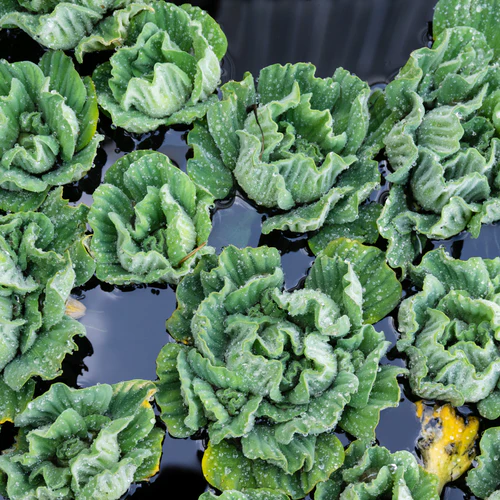Whether you’re looking to add more plants to your pond or looking to add some to your indoor or outdoor space, water plants hold a special place in many gardeners hearts. These easy growers come in many different shapes, blooms, vines, and more! Though they’re not as easy as just adding water, they are low maintenance. Check out our top five favourite water plants, what makes each one so special and how you can grow your own at home.
1.) Japanese Water Iris

Also known as Iris Ensata, the Japanese Water Iris is a prized water plant that has been said to be celebrated in Japanese culture since the mid-ninetieth century. A tradition known as ‘The Act’ is the practice of patiently meditating and watching as the Water Iris slowly unfolds its blooms over the course of three days (The Japanese Iris, Currier McEwen, 1990).
When growing Japanese Water Irises, you can expect tall blooms reaching up to 4 feet high in June and July. In zones 4 to 9, sow seeds in a small container with loamy aquatic mix and cover with potting mix. Once the seeds are established, transplant them into pond plant baskets!
Tip: Remove dead foliage to promote healthy growth. Cutting just above the water line in the fall for dormant growing months.
2.) Papyrus

Native to African regions, Papyrus is also known as Nile grass named for its natural instinct to grow along rivers, lakes, swamps, and ponds. Though capable of growing in soil and in pots, the Papyrus flourish best when grown in water. Historically, Egyptians have widely used Papyrus to make paper, food, chairs, shoes, rope and much more. Now, you can find Papyrus as a pond plant favourite!
When grown as a plant, you can place your Papyrus in a three feet deep hole in muddy soil. Cover the hole to the top with mud to secure the papyrus structure in an upright position. Alternatively, you can plant Papyrus from rhizomes in a container with fertile-moist soil and then transfer it to your pond.
Tip: Remove broken stems and feed in spring with a balanced fertilizer.
3.) Water Lilies

A symbol of pleasure and peace. With over 70 species, the Water Lily belongs to the Nymphaeaceae family and can be found all over the world in ideal climates. With giant blooms stretching out their petals early in the morning and closing back up at night. The Water Lily is a water plant perennial that can live for fifteen to twenty years or more!
Water Lilies are not only a popular pond favourite to many of us gardeners, but it’s also a favourite to fish. The Water Lily provides fish with food and shelter from the sun, while also preventing algae by keeping your pond cool.
Using a container with or without drainage holes, fill your container with soil (avoid peat soils, perlite and vermiculite). Prune your Water Lily plants and place them along the side of the container to allow for hanging over the edge. To keep your soil inside the container, top it off with stones like gravel. Submerge your pot 12-18 inches deep, allowing the leaves to float to the top!
Tip: Try to maintain cooler pond temperatures by having 60% of the pond covered by plants like water lilies to prevent unwanted bacteria.
4.) Water Lettuce

Not to be confused with regular lettuce, water lettuce can be deadly to eat! However, it’s beautiful large rippled foliage unfolds beautifully in ponds and waterscapes, creating the perfect shade to protect fish and other aquatic wildlife. Water Lettuce is also known for its ability to clean water by producing oxygen and eliminating large amounts of nitrate nitrogen, phosphate and ammoniacal.
To grow your own Water Lettuce from seed, bury your seeds in sand, cover with soil and water. Submerge slightly underwater, watch as your Water Lettuce begins to sprout and transfer to your aquatic environment!
Tip: Performs best in temperatures between 21C-26C.
5.) Broadleaf Arrowhead

The Broadleaf Arrowhead, also known as Duck-Potato or Sagittaria Latifolia. Producing edible tubers, Native Americans have traditionally used the Broadleaf Arrowhead to treat indigestion, kidney and urinary ailments. Named after its arrow-shaped foliage, unique white blooms appear in bunches of threes during the summer months.
Broadleaf Arrowhead performs amazingly in swampy areas like ponds and streams. When placed in a container, they prefer shallow water and look beautiful in waterside gardens. To grow your own Broadleaf Arrowhead, sow your seeds in late fall via tray method in 1-3 inches of water and maintain wet to highly moist soil. Once your seedlings are strong enough to be potted, transplant them to larger pots. As your plant forms new and stronger stocks, you can migrate them further into your pond, keeping their foliage above water.
Tip: Monitor for aphids and spider mites! Treat immediately.
For more inspiration for growing the best water plants, check out the latest episode of Get Up And Grow, ‘How to Get Rid of Algae in Ponds’.


